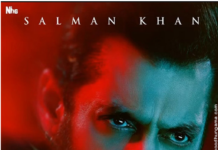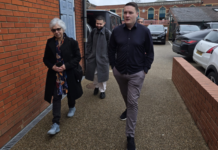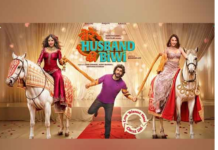I haven’t watched “Delhi Crime” the Netflix movie on Nirbhaya as I haven’t been able to gather enough courage to revisit the repulsive horror of that terrible event that defied the limits of human depravity. But Nandini Bahri-Dhanda’s recent article prompted me to have a relook at what I had written 5 years ago about Nirbhaya’s story as presented by Poorna Jagannathan in the form of a dance drama. This highly acclaimed and soul-shaking presentation was followed by a documentary made by a BBC filmmaker Leslee Udwin, titled “India’s Daughter.” However, the documentary makers had an entirely different agenda for making this film. The BBC and most Western media are well known for seeking out stories in India that look to reinforce existing foreign ideas and biases about the country.
From the Leslee Udwin documentary on Nirbhaya to Top Gear and more
India is too vast in size and culturally too diverse for Europeans to easily comprehend. European understanding of India is only superficial and since it is impossible to compartmentalize a whole subcontinent, stereotyping becomes the only way in which to explain India to the audiences back home. The Orientalists of the Raj developed a theme of profiling of India as a land of magic, miracles and trickery. Indian magicians became popular in the West, so much so that even Western magicians began sporting Indian dresses, complete with turbans etc., and even assumed Indian names. Even the famous novelist Charles Dickens, who was an amateur magician, gave himself an unusual Indian alias, Rhia Rhama Roos, that he used for a charity performance in the Isle of Wight. To the Westerners, the most well-known magic trick is the Indian rope trick, in which an Indian boy apparently climbs up a rope and disappears into thin air. This piece of trickery was nothing but the invention of the mind of a Chicago journalist, John Willkie, who was using a pseudonym, Fred S Ellmore. His fabrication of the tall tale did help the Chicago Daily Tribune sell more copies, but it also resulted in creating an image of India that was far removed from the truth.
Western stereotyping was seen at its worst when the BBC decided to bring its popular TV show, Top Gear to India in 2011. The show is about motorcars, and to my mind, it is one of the vapidest and inane programs on television. However, the BBC thought that audiences would love to see a program showcasing British cars being driven across the subcontinent by the main presenter Jeremy Clarkson, who was reputed to be a personal friend of then British Prime Minister, David Cameron. The program was disguised as a trade mission ostensibly wanting to sell British lawnmowers and other products to the Indian public. Jeremy Clarkson and his team drove around in cities like Mumbai, Jaipur, and Delhi, and then drove up into the Himalayas. Driving old British-made cars like Rolls Royce, Jaguar, and a Mini, the team was constantly complaining about everything Indian. They ridiculed the roads, the climate, the food, and Indian drivers. Clarkson even had a toilet seat fixed on the rear of his Jaguar, explaining that, “everyone who comes here gets the trots”.
A little later, he came up with perhaps the crudest remark you would have heard on television: “In India, you don’t need your penis, because you drink and drink, and it just comes out as sweat.” So culturally insensitive was the program that the Indian High Commission officially complained to the Director General of the BBC, writing, “the programme was replete with cheap jibes, tasteless humour, and lacked cultural sensitivity. This is not what we expect from the BBC.” A British Labour MP of Indian origin, Mr Keith Vaz, was so outraged that he demanded an apology from the BBC, which, of course, never came. Instead, the program was aired in India on the BBC’s international entertainment channel. The Delhi office of the BBC, apprehending some kind of demonstration against it, even took down its sign from the office building. However, nothing untoward happened, and the event passed as another inconsequent milestone in the long history of this ancient land.
The BBC has had numerous run-in with the government and the people in India. In 1970 it was thrown out after a row about a film on Calcutta made by the French director, Louis Malle. In 1975 it preferred to shut down its operations rather than accept censorship during Indira Gandhi’s emergency regime. In 1984, demonstrators protesting against a BBC radio interview with a Sikh separatist attacked the Delhi office. In 1995 a cameraman was killed by a letter bomb in the BBC’s Kashmir office. However, it continues to maintain this Macaulayist attitude of Western cultural superiority and is always on the lookout for stories that can validate this attitude.
Leslee Udwin’s documentary falls into this category of stereotyping a whole culture and tarring an entire nation with the same brush. By focusing the spotlight on India, Udwin has turned the attention away from her own culture and society. She claims to be a victim of the same crime and yet she does not find it more important to understand the minds of the rapists from within her milieu. It is not as if incidents of rape are rare in England. The horrible story of Rotherham was not the first to break out, nor will it be the last. But, English society observes a strict code of censorship, under which “inconvenient truths” are inevitably swept under the carpet. Perhaps the BBC will not pay for a story based on Leslee Udwin’s personal experience but is ready to open its purse if it involves a third world country, especially India. I recall an old BBC news story about the conflict in Kashmir that started in the 1980s. As part of its policy to keep India on the defensive, BBC was trying its best to defame Indian security forces in the valley. Visuals of heavily armed soldiers driving through deserted city streets were shown to reinforce the argument of Indian Armed Forces’ repression of the Kashmiri people. Later, some sharp viewers pointed out that the pictures were taken from the conflict in Chechnya and passed off as those from Kashmir. Did the BBC apologize? I think not. I am sure there must be many more such examples of BBC’s deliberate perfidy against a country for which it has nothing but “scurrilous contempt.”
Nirbhaya’s tragic story has been handled with much more sensitivity by the South African playwright Yael Farber. Her theatrical presentation, “Nirbhaya’s Story” that premiered at the Edinburgh Festival in 2013 is perhaps the most powerful cry for justice for women in this male-dominated patriarchal society. But, as I wrote, the reach of this message is very limited and perhaps does not target the right audiences. In contrast, the BBC has a different motive for making this documentary. Its target audience is not the social milieu from where Mukesh Singh and his partners in the horrible crime have come, but the people of the West who have certain fixed ideas about India’s backwardness and the primitivism of its culture and religion. In India, its target audience is the urban, English speaking, convent educated, so-called liberal individual, whether male or female, who finds everything about vernacular India repugnant and talks eloquently about such concepts as “freedom of expression” and artistic liberty” in perfectly articulated Oxbridge English, while sipping from a glass of single malt Scotch whisky or delicate French wine. When I expressed my frank opinion about this documentary to some of my expatriate Indian friends I was appalled to find that they held similar views about India; that India was a country where rape was commonplace, and that Delhi was the rape capital of the world. I learnt from social media that the original title of Leslee Udwin’s documentary was just that: “Delhi – the Rape Capital of the World.”
This stereotypical profiling of India will continue so long as we have willing accomplices within Indian media. TV Channels like NDTV, hiding under the fig leaves of freedom of expression and artistic liberty, willingly collaborate in such exercises. They keep reinforcing the imperialist argument that India is not capable of governing itself and its society continues to live by primitive moral codes. The reason why there was no protest from the Indian media against Jeremy Clarkson’s obnoxious program is not difficult to find. Our English language mainstream media continues to remain befuddled by its imperialist hangover.

Born in Kashmir. Indic by culture. Occasional writer, avid reader. Love serious cinema, but not TV. Eternal student.
SOURCE & THANKS:
Readers like you, make ESHADOOT work possible. We need your support to deliver quality and positive news about India and Indian diaspora - and to keep it open for everyone. Your support is essential to continue our efforts. Every contribution, however big or small, is so valuable for our future.












Mr Dar you will be pleased to know that Eshadoot and their researchers have been protesting directly to BBC here in London by copying back links to all their anti India stories on-line. Not that an apology or acknowledgement is forthcoming but we keep trying. There are resident journalists like Biswas and Pandey who since Modiji has taken over nothing but spewed anti Hindu and anti India stories always with a question mark as if to get out of their reponsibility. Your article is eye-opener and we need more such evidential matters to raise it further with the BBC news editors responsible for getting their anti India narrative on-line and other news